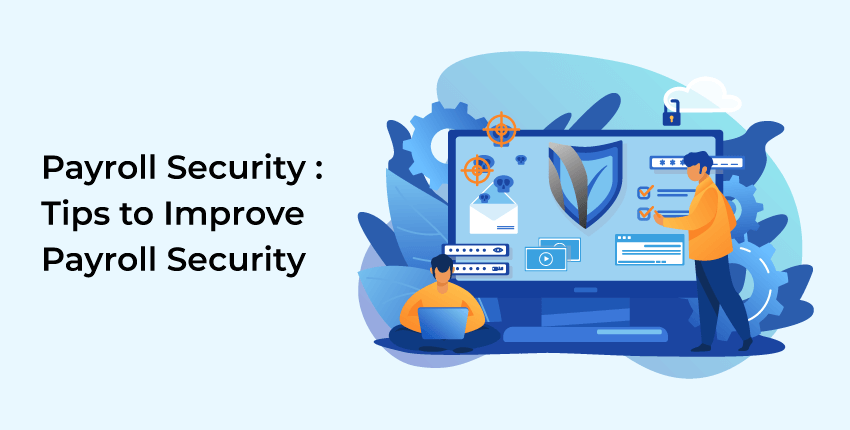- August 7, 2023
- Posted by: 10bits_mexican
- Category: Payroll Services

As an employer, your HR department wields a critical responsibility: protecting your employees’ sensitive data. Confidentiality is paramount, from social security numbers to bank accounts, payslips, and home addresses. But in a world teeming with hackers and data breaches, ensuring payroll security isn’t just a good idea—it’s a financial imperative.
So, what exactly is payroll security? It involves safeguarding all confidential employee data related to compensation, benefits, and deductions. Think names, addresses, taxes, medical insurance, and more. These details are susceptible, and breaches can be costly.
In this blog, we will list some actionable tips to fortify your payroll fortress that are highly recommended by companies offering payroll services in USA. From robust security systems to best practices, let’s create a secure environment that keeps your employees’ data under lock and key.
Payroll Security Tips
1. Define a Clear Payroll Policy
Purpose: A well-defined payroll policy acts as a compass, guiding your team through the intricate landscape of compensation and deductions.
Roles and Responsibilities:
- Clearly outline who handles what. Payroll administrators, HR personnel, and department heads should know their specific responsibilities.
- Specify who calculates salaries, processes deductions, and ensures compliance.
Processing Timelines:
- Set clear deadlines for various payroll tasks. When should timesheets be submitted? When are payments disbursed?
- Consistency matters—adhere to these timelines rigorously.
Data Security Protocols:
- Address data privacy and security. How is sensitive information stored and transmitted in your payroll management solutions?
- Encryption, access controls, and secure storage are crucial.
Compliance Guidelines:
- Stay harmonious with tax laws, labor regulations, and industry standards.
- Regularly review and update policies to reflect any legal changes.
2. Use Reputable Payroll Software
Purpose: Your payroll software is the digital guardian of employee data. Choose it wisely.
Research and Compare:
- Look for reputable companies like 10bits providing payroll solutions in USA. Read user reviews and compare features.
- Consider scalability—your software should grow with your organization.
Integration:
- Seamless integration with existing systems is essential.
- Features like automated tax calculations and direct deposit streamline processes.
Security Measures:
- Robust encryption: Data should be indecipherable to unauthorized eyes.
- Regular updates: Patch vulnerabilities promptly.
- Secure servers: Your software is the drawbridge—only allows authorized entry.
3. Limit Access to Payroll Data and Systems
Purpose: Not everyone needs access to payroll data. Limit permissions to authorized personnel.
Role-Based Access:
- Assign permissions based on job roles. Receptionists don’t need backstage passes to the payroll vault.
- Only authorized personnel should handle sensitive data.
Need-to-Know Basis:
- Minimize accidental leaks by restricting access.
- Keep the guest list exclusive—only those directly involved in payroll management.
4. Regularly Review and Update Access
Purpose: Access permissions accumulate over time. Regularly declutter to maintain security.
Employee Transitions:
- When someone switches departments or leaves the company, update their access rights promptly.
- Former employees should no longer have access.
Audit Trails:
- Keep records of who accessed what and when.
- Detect any unauthorized activity promptly.
5. Avoid Obvious or Easy-to-Guess Passwords
Purpose: Passwords are like secret handshakes. Make them unique and robust.
Complexity Rules:
- Encourage employees to create strong passwords.
- Avoid common choices like “name or surname”, “date of birth”, “123456” or “password.”
Multi-Factor Authentication (MFA):
- Add an extra layer of security.
- Require both a strong password and another form of authentication (e.g., fingerprint or token).
6. Ensure Physical Security
Purpose: Your office holds sensitive information. Physical security matters.
Lock It Up:
- Secure filing cabinets containing payroll records.
- Control access to server rooms housing critical data.
Surveillance:
- Install security cameras to monitor physical access.
- Detect any unauthorized entry promptly.
7. Conduct Regular Security Training and Awareness
Purpose: Employees are the guardians of your payroll kingdom. Train them well.
Phishing Awareness:
- Teach employees to spot suspicious emails.
- Avoid clicking on dubious links or downloading attachments.
Role-Playing:
- Engage them with real-world scenarios.
- Celebrate their vigilance—knowledge is their armor.
8. Train Employees on Cybersecurity and Phishing Awareness
Purpose: Equip employees to navigate treacherous cyber waters.
Spotting Cyber Reefs:
- Teach them to recognize phishing emails.
- Explain social engineering tactics used by cybercriminals.
Collective Protection:
- Remind employees that their vigilance safeguards not only their data but also the entire organization.
The cybersecurity strategy of any organization should incorporate measures to secure its payroll system. To protect financial data and prevent fraud, it is essential to implement strong security protocols, provide cybersecurity training to employees, and conduct regular security audits. Prioritizing payroll system security is crucial to mitigate the risks of financial losses, legal consequences, and damage to the company’s reputation. Therefore, companies must take proactive steps to safeguard their payroll data and defend against potential threats.
10bits is your ideal partner for payroll management solutions in the USA. As the premier among payroll processing companies in the USA, we can help you develop custom plans as per your needs. Give us a call today!
